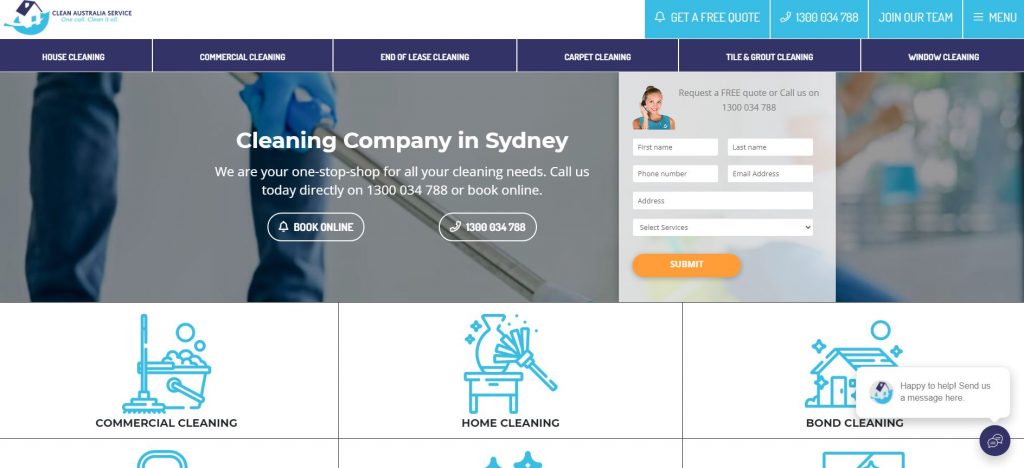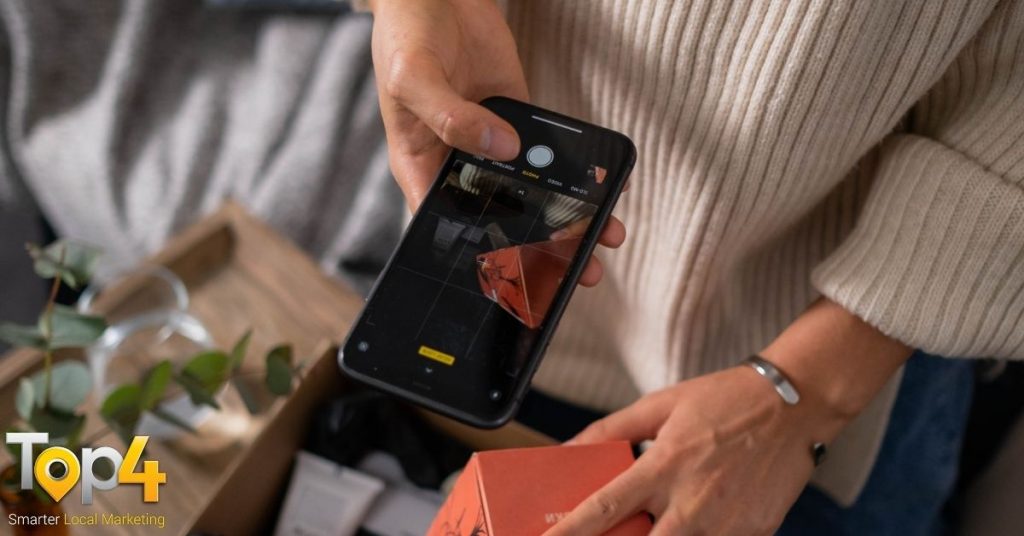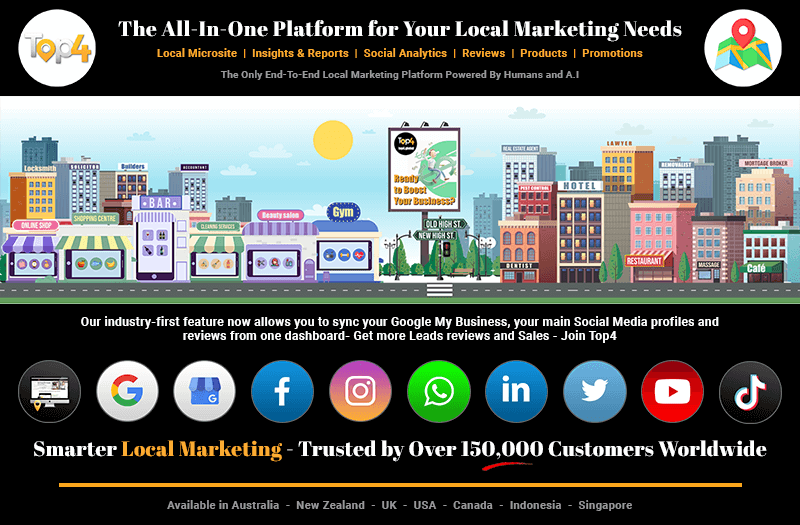A website’s most valuable asset can be a high-converting landing page. Despite how simple a high-quality landing page may appear, a truly effective landing page isn’t created by accident. It necessitates meticulous planning, designing, testing and implementation. When optimised correctly, it can be just as powerful (and profitable) as a live salesperson.
But don’t limit yourself to just one! According to studies, the more landing pages you create for your website, the higher your conversion rates will be. Most notably, companies see a 55% increase in leads when growing their number of landing pages from 10 to 15.

This article will talk about the most frequent high-converting landing page best practices. Take a look to see what you’re doing right (or wrong) and make adjustments to make the most out of your conversions.
What exactly is landing page optimisation?
Simply described, a landing page is a web page designed specifically for a marketing or advertising campaign. It’s where visitors “land” after they click on a link in an email or an ad.
Landing page optimisation is fine-tuning every aspect of a landing page to influence a user’s purchase decision directly or indirectly.
A landing page can be optimised in a variety of ways. You can use one or more of the following aspects to help you achieve your conversion goals:
- Page experience or page design
- Page copy
- Call-to-action (CTA)
- Colours (especially button colours)
- Additional graphic elements (embedded videos, GIFs, images)
- Interactive elements (pop-ups, chatbots, etc.)
It’s critical to know your audience to accomplish this correctly. Then you must decide how you want the audience to engage with your page’s content. Not knowing your target audience is one of the online business owners’ biggest mistakes when starting out.

You can try to communicate directly to your target audience of marketing professionals by incorporating marketing-related keywords that they will recognise. Even the use of charts likely feels familiar to a marketer.
Furthermore, you can use data to drive your strategy is one way to ensure that you’re targeting the right users. You can either conduct a survey of an existing audience before launching a landing page campaign or conduct a search on Google for existing customer studies in your niche.
To achieve the best outcomes, you need to figure out what your audience’s primary pain points are, as well as what they like and consume.
Landing page best practices to increase conversions
There are certain common best practices of a landing page to follow to convert more visitors into paying customers. You can use the data from A/B testing regularly to learn about your prospects’ preferences and advance your conversion rate percentage by percentage.
A well-designed landing page will address the audience’s problems, provide a solution in the form of your product or service, and then use engaging language to persuade them to take action, such as purchasing your product or signing up for your service.
Check out some of these strategies to optimise your landing page.
1. Aligning your landing page with your goals
Landing page optimisation should ideally begin with your high-level business objectives. Do you want to increase your sign-ups or sales? How much and by when? The more specific you are, the easier it will be to align your goals to your landing page’s specific language and design.
Let’s say you target to get 1,000 subscribers by the end of the year. In this case, your landing page should be centred on an offer that is only available to new subscribers and will encourage sign-ups above all else.

After you’ve aligned your financial goals and the theme of your landing page, you’ll need to relate individual campaign goals to the big picture. This involves setting up your ads and landing pages to mirror each other’s language, look and feel.
You can make a landing page with soft repetition, which is good for conversions. The scientific approach claims that utilising consistent word choices and visual clues promotes a sense of positive familiarity. Repetition is also one of the simplest, most effective landing pages best practices because it creates a feeling of assurance for hesitant users, giving them something both novel and somewhat familiar.
This strategy is beneficial for eCommerce landing pages that rely primarily on ad-driven traffic and want to get the most of their advertising budget.
2. Simplifying your landing page design
It’s important to pay attention to the design of your landing page. Overloading your page with too much text or too many distracting pictures can cause visitors to become overwhelmed.
You should follow the simple rule of “less is more”. Use a lot of negative space to draw the eye to the most important part of the page (the main call to action).

The most effective landing pages have attractive but subtle visual cues, such as arrows, whitespace, copy alignment and colour contrast. Following these will keep visitors on the site longer.
You can use a minimalistic style and contrasting colours to convey your key point. Even if you don’t know much about coding, a plugin or template can help you create a landing page.
3. Keeping the action on the page’s upper half
Your visitors are impatient. According to a study, internet users’ aggregate attention spans are decreasing. Therefore, site visitors need to know what your landing page is about right when they land on it.
Make sure visitors understand precisely what they’re supposed to do on your page and why they should do it. This indicates that the following elements should be kept above the fold:
- Headline
- Description sales proposition
- A picture or video
- The primary call-to-action button on your website.
For instance, you can get the most crucial question like: “How much would my transfer cost?” You can make a calculator simple to understand and use by presenting a clear value proposition.
4. Utilising the strategies of scarcity

Even the most seasoned online customers are thrown off by headlines warning of limited supply availability. Scarcity techniques create a sense of urgency and encourage visitors to take action. The followings are the examples:
- Discounts are only available for a limited time
- Unspecified time left
- limited stock available
- Other users’ purchases
- A countdown timer that visible.
5. Keeping your call to action simple
It would be best if you created CTA that is easy to spot and comprehend. Don’t make them hard to figure out what they have to do. The ideal CTA is 1-4 words long and uses simple language to get the message across.
Examples:
- “Join”
- “Contact Us”
- “Get Started Now”
- “Get a Free Consultation”
You’ll notice that the finest CTAs adhere to the “few-word rule.” a CTA can be 5+ words long or even form a complete sentence. This strategy can also be effective. You just need to ensure that the style fits your brand, whatever your CTA is.
Consider using a “Buy Button” if the primary purpose of your landing page is to entice visitors to purchase your product. This is a shoppable button that you can easily add to a landing page, blog, or anywhere else on your website. By clicking a Buy Button, customers are instantly taken to their cart on your site.
6. Utilising a captivating copy and headlines

The headline of your landing page is the first thing your visitors see when they land on your website. Thus, it’s critical to make every word count! In general, it’s essential to make your landing page copy compelling, clear and readable. The followings are a few strategies for creating compelling landing page copy:
- Limited your sentences up to 20 words or less
- Use the readability test to make the copy is easy-to-read
- Create high-converting headline
- Use “you” and “your” to create a personal connection with the visitors
- Include words from your industry that your target audience will recognise
- Use the AIDA model or the PAS model to make your text flow well.
- Use “power words” throughout your copy to elicit an emotional response.
It will be more challenging to persuade your readers to stay and take action if your copy is not clear or interesting enough. Before you go live, show your landing page to people who are unfamiliar with your business and gauge their first impressions. Ask them how clear your message is and if they understand the action the page wants them to take.
7. Maintaining a mobile-friendly landing page
The use of a mobile-first strategy in marketing is not optional. M-commerce (mobile commerce) is a billion-dollar business that is rapidly growing. Get started with mobile optimisation, or miss out on many potential conversions.

The followings are a few pointers to bear in mind while creating mobile-friendly landing pages:
- Create your mobile-friendly landing page first, then move back to create your desktop version
- Ensure that your text is big enough to read on a small screen
- Make all buttons and links easy to tap or click
- Remember that a lengthier landing page is fine as long as there is enough whitespace between each element
- Utilise a single-column layout
- Thoroughly test all multimedia (such as videos and forms) on both mobile and desktop
- Evaluate your mobile load speeds and simplify your design if the page isn’t loading fast enough.
8. Ensuring the page loads quickly
People despise slow websites and will leave pages that do not load right away. This implies that every second your site takes to load could cost you money. On top of that, a bad user experience can also damage your SEO efforts.
There are several nice benefits to speeding up your pages. In a case, a website saw an 8% increase in sales after they optimised their website. Sounds good, right?
The followings are some quick tips for loading pages quickly:
- Make your photos as small as possible
- Don’t run too many scripts at once
- Utilise a caching plugin
- Use a content delivery network (CDN) to host your files.
A high bounce rate could indicate a problem with page speed. Run a speed test to see specific issues.
9. Regularly testing and updating your landing pages

Testing and revisiting your landing page on a regular basis is the ultimate optimisation method for every business. Because the only way to know what works and what doesn’t is to test it out.
You can do an A/B test on a variety of things, including:
- Landing page copy
- Headlines
- CTA (call to action)
- Design elements.
You can conduct specific A/B tests to see which combination yields the best conversion rate. Try a tool like Optimizely or Google Optimise to run and track your tests.
Updating your content on a regular basis is also vital because it makes sure that your page is filled with up to date and relevant information. It also shows that you’re committed to providing the best possible experience for your visitors and encourages frequent site visitors to check in with what’s new.
10. Adding customer reviews to act as social proof
When people see that others have had a good experience with your product or service, they are more inclined to convert. That’s where reviews or testimonials come in. They provide social proof and increase trust in your brand.
According to a recent study, COVID-19 will cause 31% of customers to read more online reviews in 2020 than ever before.
The best landing pages are those that include testimonials into the site’s natural flow. For example, adding positive user reviews near the pricing section can help persuade users to convert without making it seem forced.
A headshot and the name of the individual offering the testimonial might give it a more genuine, human touch. Having a short, specific quote from the customer that showcases how your product or service has helped them can help convey information on your product without coming off as overly boastful.

Video reviews are becoming increasingly popular, and for a good reason: video marketers receive 66 percent more quality leads per year.
You should know the value of a human endorsement for their product. Videos are more engaging than text-based testimonials, and they can help you show your product or service in a direct and eye-catching way.
11. Ensuring your landing page is SEO-friendly
Even if your landing pages are solely connected to your advertising campaigns, you should also optimise them for SEO.
According to statistics, organic search accounts for 53.3 percent of total website traffic. SEO should be viewed as a long-term investment in your inbound traffic. You don’t need to go overboard, but SEO best practices call for at least some basics:
- Utilise targeted keywords in headlines and copy
- Make a title that will catch people’s attention
- Insert industry-related keywords for your target audience
- Optimise your alt tags
- Add a meta description to your page
- Make sure your URL (slug) is short and simple.
To help you discover the ideal keywords to employ throughout your landing page, use tools like Ubersuggest or SEMrush. You can look into customer reviews or comments for further ideas to see how they talk about your product or service.
12. Creating a “thank you” page
It’s easy to forget about simple things like thanking customers for their support in the era of quick sales and constant remarketing.
Consider designing a personalised thank you page with a sincere message thanking customers for their support once they’ve completed their transaction. This acknowledgement shows that your business genuinely treats your customers well and is willing to go out of your way to recognise their contribution to your success.
Get more conversions by optimising your landing page
Keep in mind that the best landing pages are the ones that get to the point quickly and seem effortless. Your goal is to give potential buyers a concise overview of your product or service. They should understand the main message without being overloaded by too much text, graphics, or other elements. Every section on your page should have a strategic purpose.
A high-converting landing page has a lot of moving parts. Following these best practices should help you achieve the results you’re looking for and achieve a better ROI on your next marketing campaign.

Landing pages are an important aspect of every advertising campaign, but today’s successful businesses also require a strong online presence. If you don’t have a website or online store yet, sign on Top4 location-based marketing platform to set your online store.
Our unique location-based marketing platform provides a number of features you can use to drive more customers’ engagement. You can add and sell your products directly from your Top4 advert, locally or globally. The products you uploaded on your business profile will also appear on the Biz Marketplace page, which is Top4’s very own online buying and selling platform. Having your business across channels like marketplaces (Google Shopping, Shopify, etc.), social media (Instagram, Facebook, etc.), online communities, your website and Top4 is the best way to increase sales! Try Top4 today, it’s easy and only takes a few minutes!
To find out how we can help you with your Website + Marketing, using our unique location marketing platform called Top4, get in touch today at www.top4marketing.com

Looking to build customer loyalty through social media? Don’t forget to add your business to Top4.global
List your business, create your own digital store to sell goods and services, and share posts on social media. Promote your business on Google instantly! Should you need help with local digital marketing then view our new Google Marketing Platform and services Top4 Marketing
Get Found On Google Promote Your Website, Reach local customers today!
Our Digital Marketing Agency Services Across All Industries Include Search Engine Optimisation (SEO), Google Marketing, Website Design, Corporate Web Development, and local location-based marketing using our own Google Marketing Platform!
Engage A Social Media Agency For Only 1/3 The Cost Of Employing A Social Media Manager…LET’S TALK!




